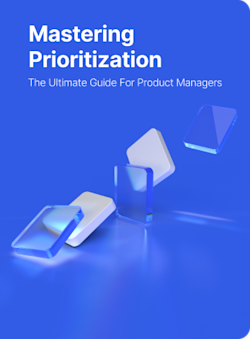RICE framework
What is the RICE framework?
The RICE framework is a scoring model intended for prioritization and was designed for product managers.
It helps them determine what features, products, and other initiatives to stick to in their roadmaps using a scoring system for these items according to four variables. These variables form the acronym RICE, which stands for Reach, Impact, Confidence, and Effort.
There are three main benefits of using the RICE scoring model. It helps product managers make better decisions, it minimizes the personal bias of the members in the decision-making process, and it helps the company defend and present its priorities on the roadmap to executive staff and stakeholders.
How to use the RICE scoring framework
In order to use the RICE framework, you have to evaluate ideas by scoring them against the four factors:
Reach: Reach measures what audience your product will reach in a specific timeframe. An example would be that you expect the project will result in 200 new clients within the next 6 months. For reach you want to use actual measurements from product metrics as much as possible.
Impact: Impact represents how your product affects the customer. This can be hard to measure, but try using a 3-point scale. A score of 3 means your product will have a significant impact and a score of 1 means the product will have little impact on the customer. Base these scores on customer-based metrics.
Confidence: Confidence works as a gauge to determine how sure PMs are that the product will be well received by customers. It should be represented by a percentage and if any idea scores under 50% it should be reworked to increase confidence levels.
Effort: Effort estimates how much work a person can do within a month on the product.
These four scores are then combined in the following formula: Reach x Impact x Confidence / Effort = RICE score
Use RICE to rank a handful of different product ideas or features and move forward with the highest-scoring options after comparing all of their RICE scores.
History of the RICE scoring framework
Intercom, a messaging-software producer, developed what we know as the RICE roadmap prioritization model to improve the company's decision-making process.
Because Intercom had a competing and unique set of project ideas, they couldn’t find a proper method they could use, although they had previously used all the other prioritization models for product managers.
To solve this issue, the main team developed a new scoring model which was based on the four RICE factors (reach, impact, confidence, and effort) alongside a formula for combining and quantifying them.
The formula would give a single score which could then be applied in a consistent way no matter what type of idea was analyzed.
This way, the Intercom team could have an objective way to decide which initiative deserved prioritization on the product roadmap.
General FAQ

Glossary categories
Prioritize with confidence

Experience the new way of doing product management








